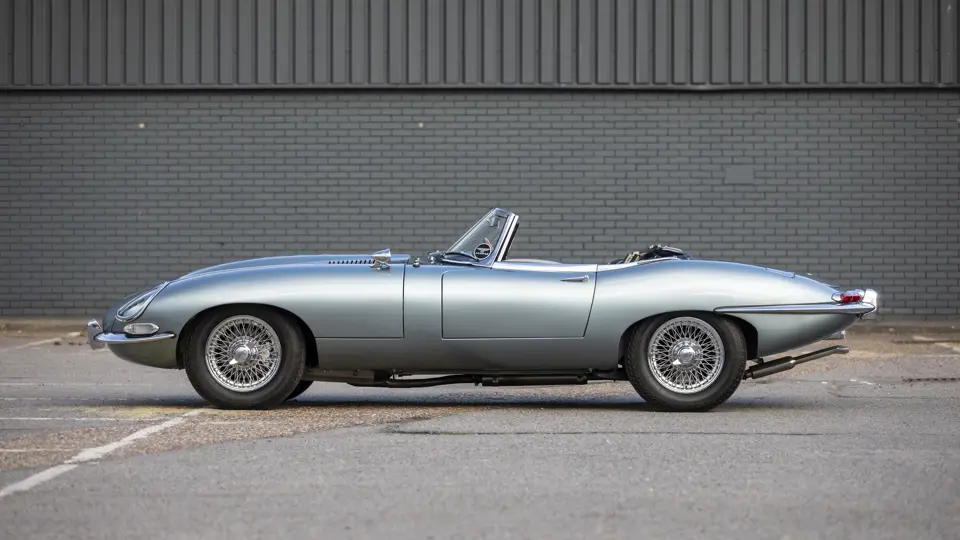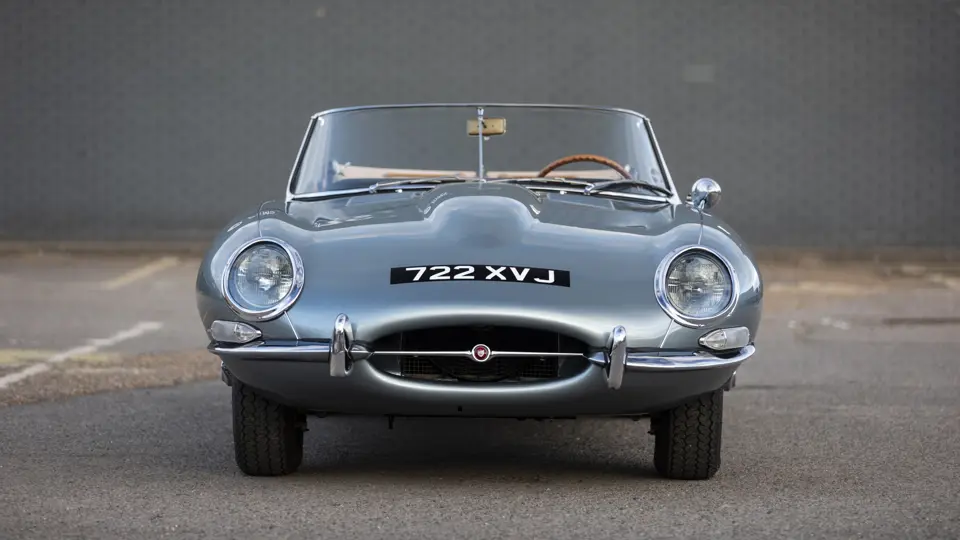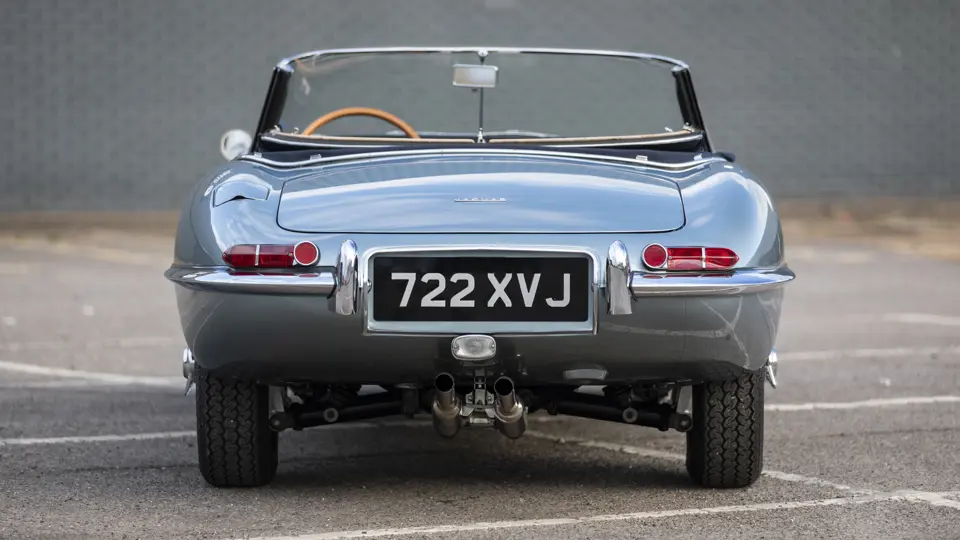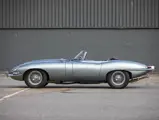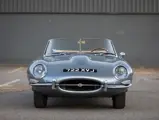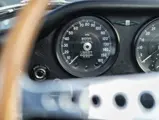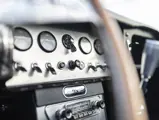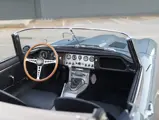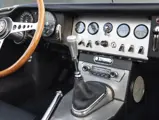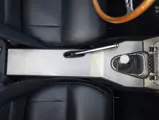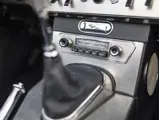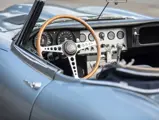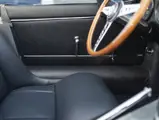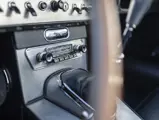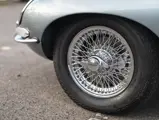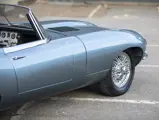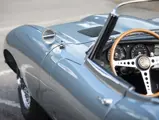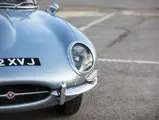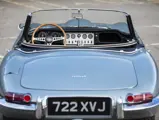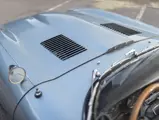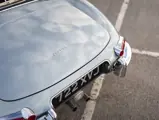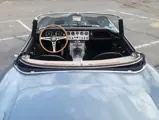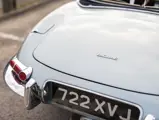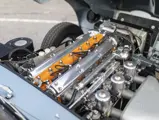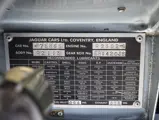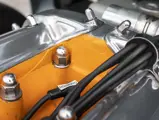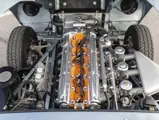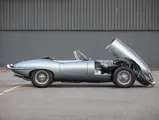Jaguar’s road-going replacement for the hugely successful XK 120 was to be inspired by the D-Type where construction was concerned, but it was Malcolm Sayer’s jaw-dropping styling that set the E-Type apart from its rivals and instantly propelled the latest leaping cat to icon status.
With its long bonnet, curved haunches, and instantly recognisable profile, both fixed-head and open variants won the hearts of the motoring press upon first showing at Geneva in 1961—and it wasn’t long before the public were falling over themselves to get behind the wheel. The fact that one of the very first examples had managed to hit the magical 150 mph figure during a test for The Autocar only served to increase appetite, and with the help of legendary road tester Norman Dewis, the Jaguar was honed to motoring perfection.
The lengthy bonnet clothed a 3.8-litre inline six-cylinder engine that was capable of propelling Sir William Lyons’ vision from 0–60 mph in under seven seconds. Enzo Ferrari was said to be so impressed that he allegedly once claimed it to be “the most beautiful car ever made”.
An instant hit in period, it is the earliest examples that remain most sought-after today. E-Types built during the first months of production feature a number of unique details that make the alluring E-Type even more desirable to enthusiasts, including the often-cited “flat-foor”, which was replaced by a dropped-heel footwell introduced shortly after production began.
Chassis 875865 was built as a left-hand-drive car for export, completed on 23 October 1961. The presence of welded bonnet louvre panels, as opposed to later pressed versions, confirm this beautiful vehicle as an early example of Jaguar’s iconic sports car. It was finished in Opalescent Dark Blue over a Light Blue interior and a Black soft-top, and was despatched from the factory the following week bound for Jaguar Cars, New York. It was first registered in Illinois in January 1962, before making its way to Mississippi. In the early-1990s, the car was sold to renowned car collector, Peter Mullin, in Los Angeles. A certificate issued by the Jaguar Daimler Heritage Trust confirms chassis, body, and engine numbers match those currently on the vehicle.
In 1998—and part-way through restoration—the E-Type found a new owner in Pasadena. The rebuild process continued and was completed at the hands of several California-based specialists, with instruction that body, paint, mechanical, and trim work all met factory specifications.
In its restored form, the Jaguar was frequently shown from 2008 to 2016, winning its class on multiple occasions at a variety of concours events, including Los Angeles Concours D’Elegance, Dana Point Concours D’Elegance, and San Marino Motor Classic—consistently scoring in excess of 99 points.
The vehicle was completely repainted in 2017, refinished in Opalescent Silver Blue paired with a blue soft-top, a particularly pleasing combination that adheres to available specification at time of manufacture. The car returned to the UK at the beginning of 2020.
The 3.8-litre dual overhead camshaft engine block and cylinder head bear the number "R2302-9", with the latter's casting finished in Bradite Golden Yellow—commonly referred to as “Pumpkin”. Engines produced shortly after this particular example was assembled featured a shade of gold instead.
This Jaguar E-Type is a highly attractive example of what is widely regarded as one of the world’s most beautiful automobiles. With desirable “flat-floor” specification and matching-numbers chassis and engine, this Roadster would make a fine addition to any collection of landmark sports cars.
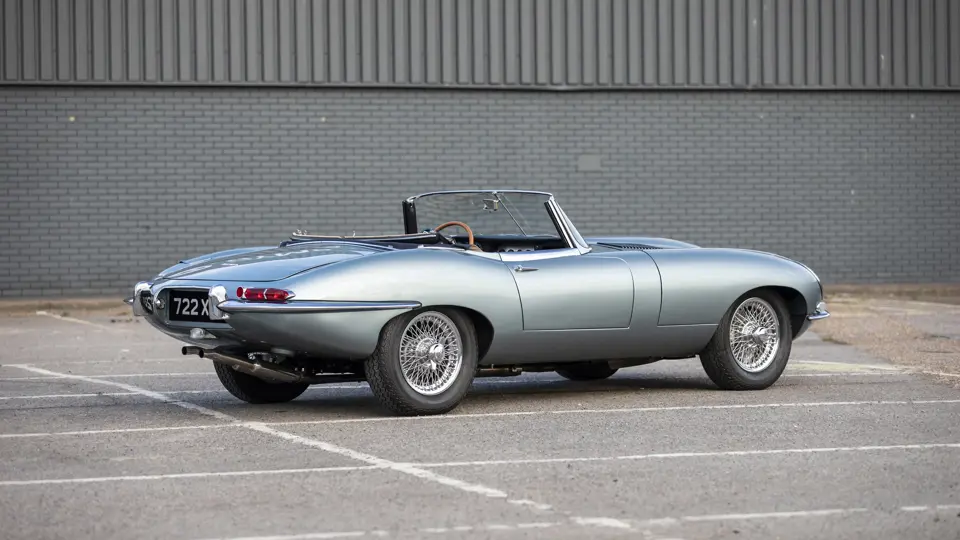



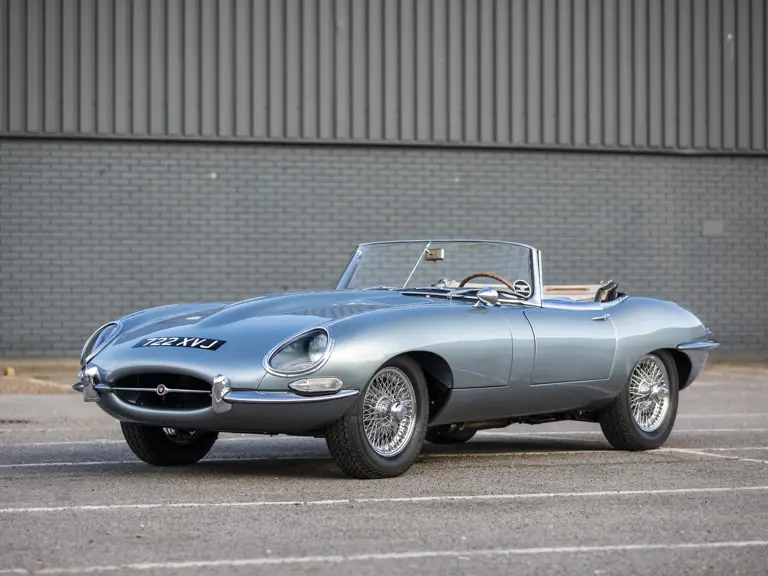
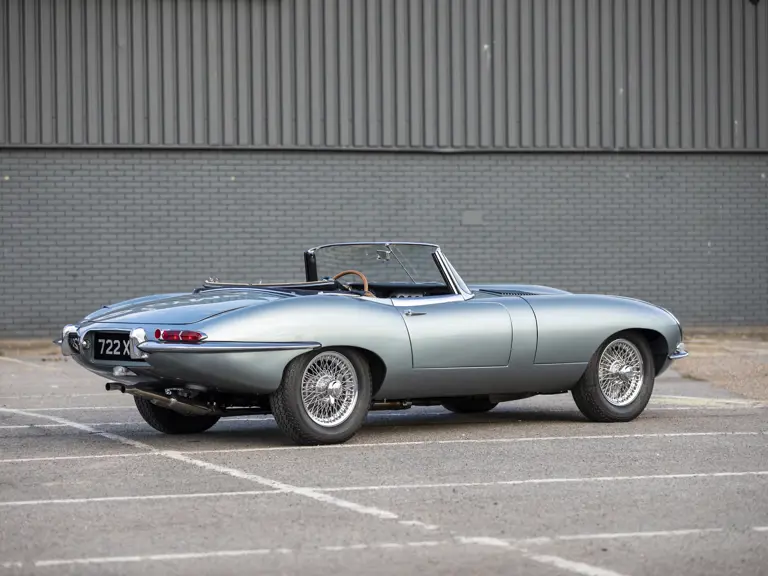
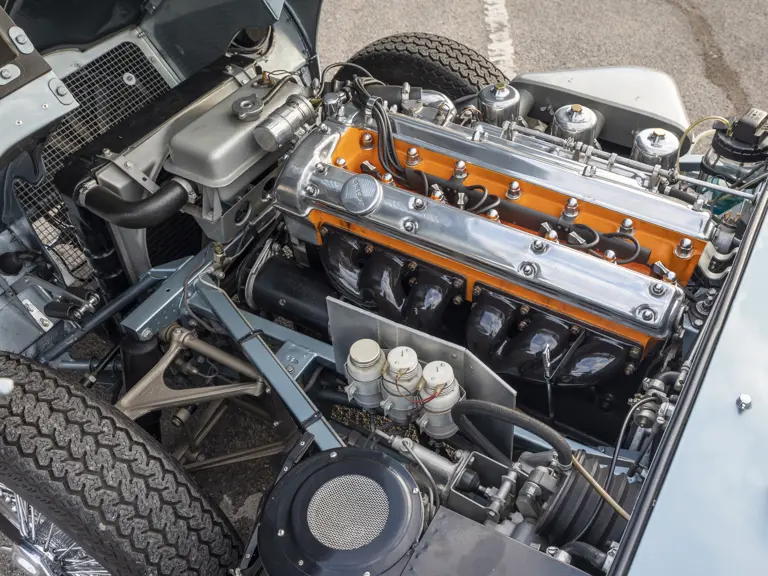
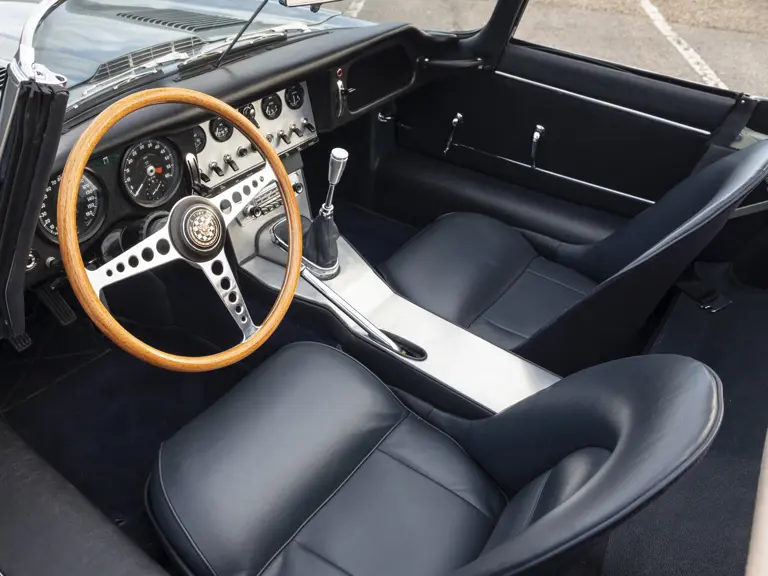
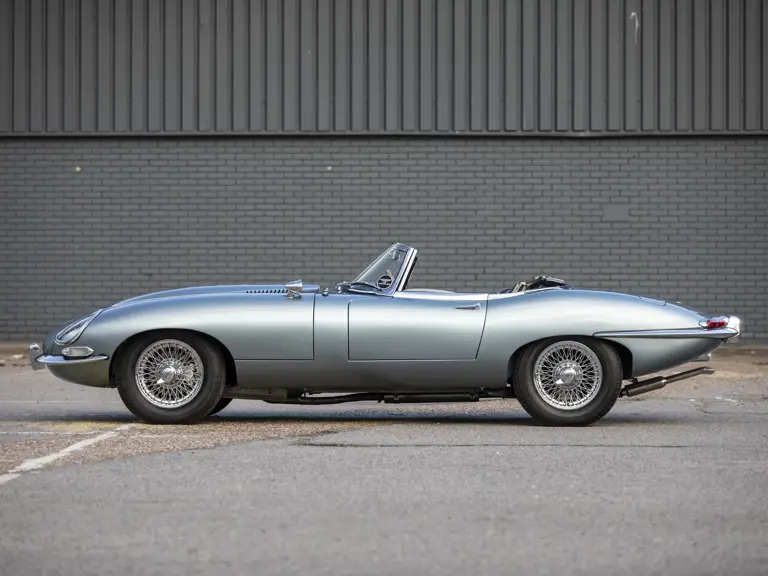
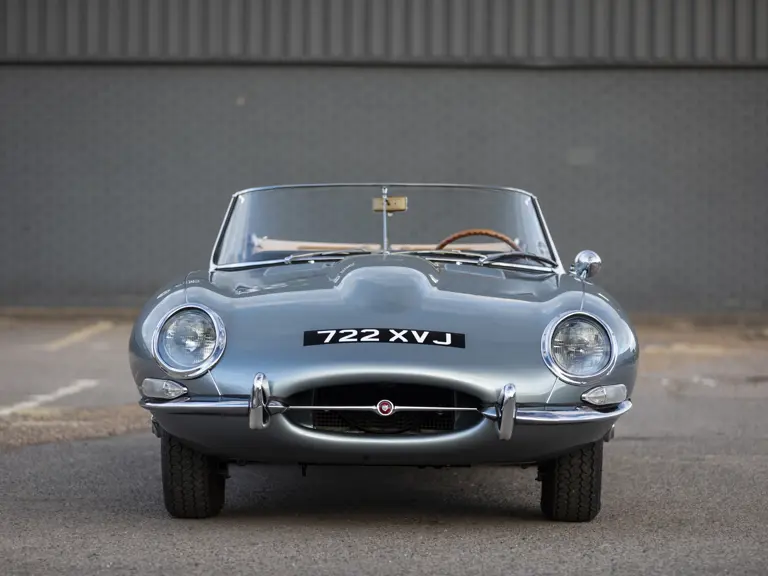
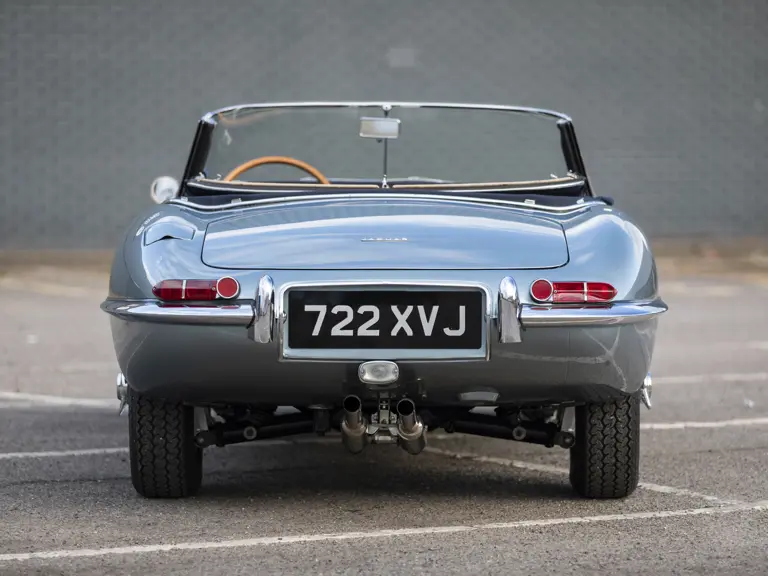


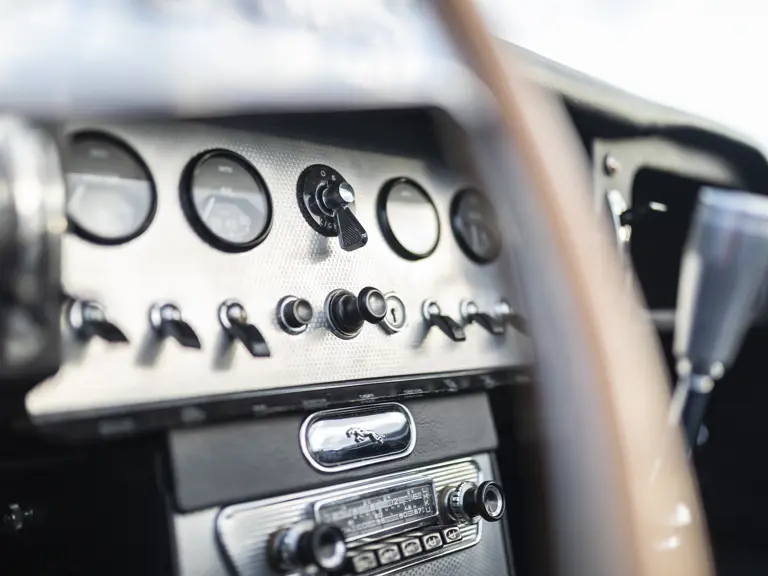

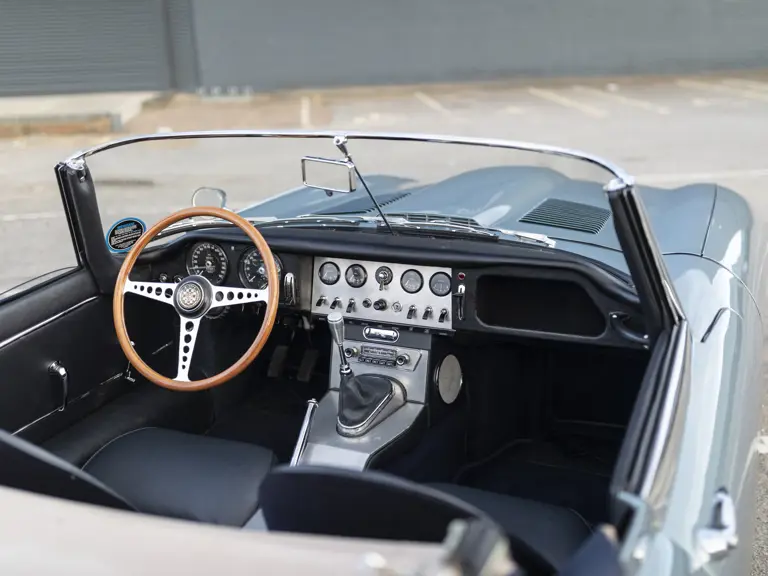
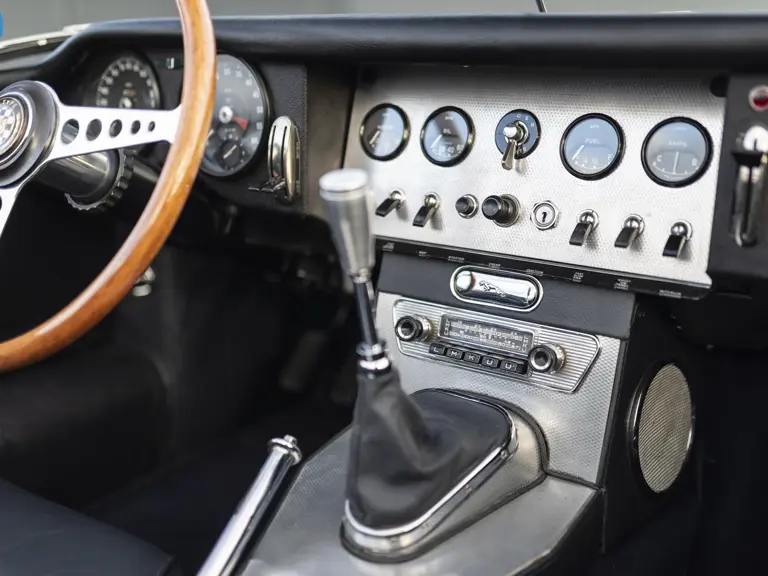
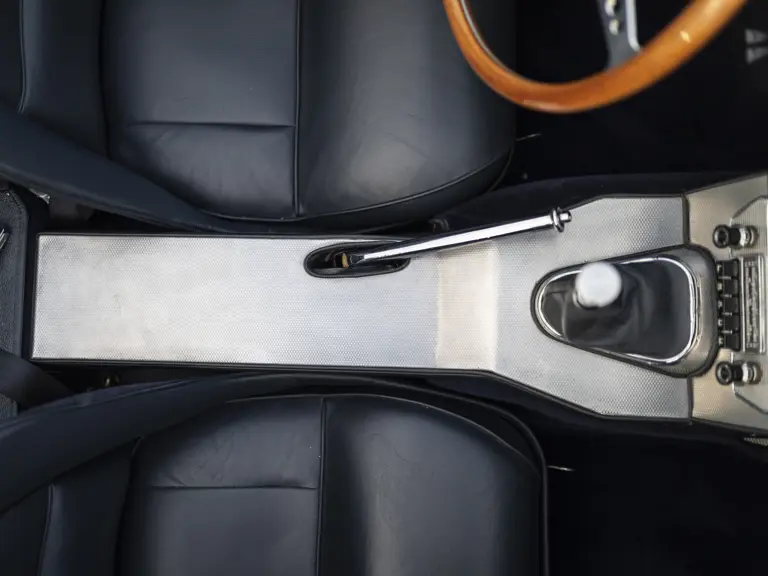
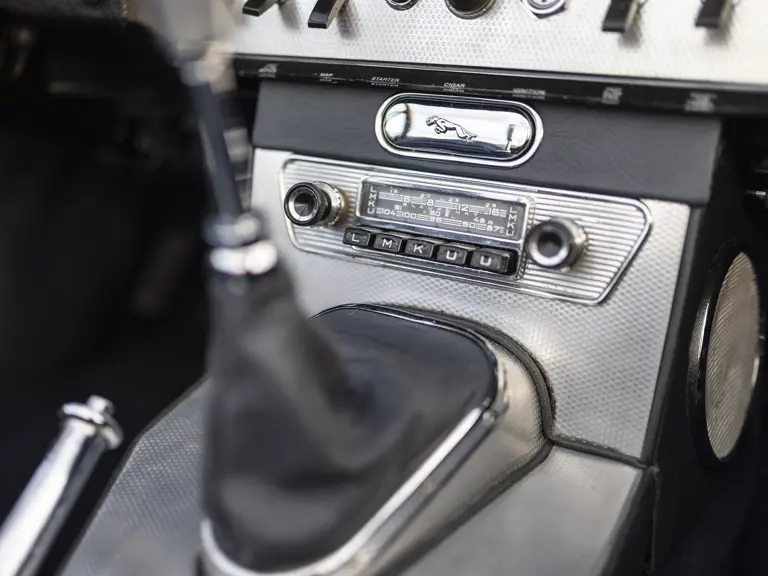
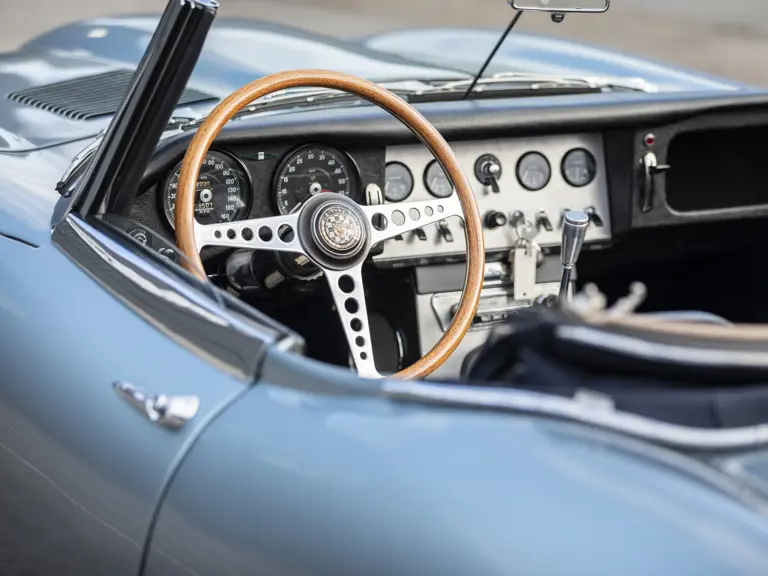
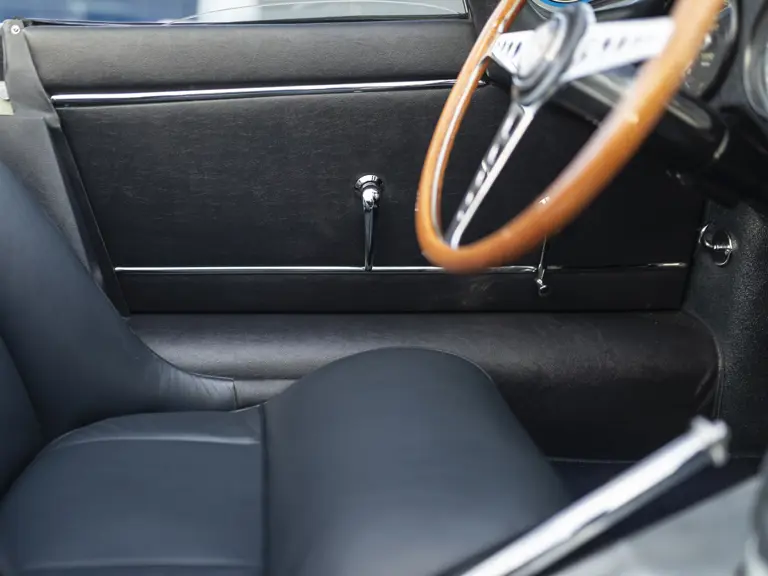
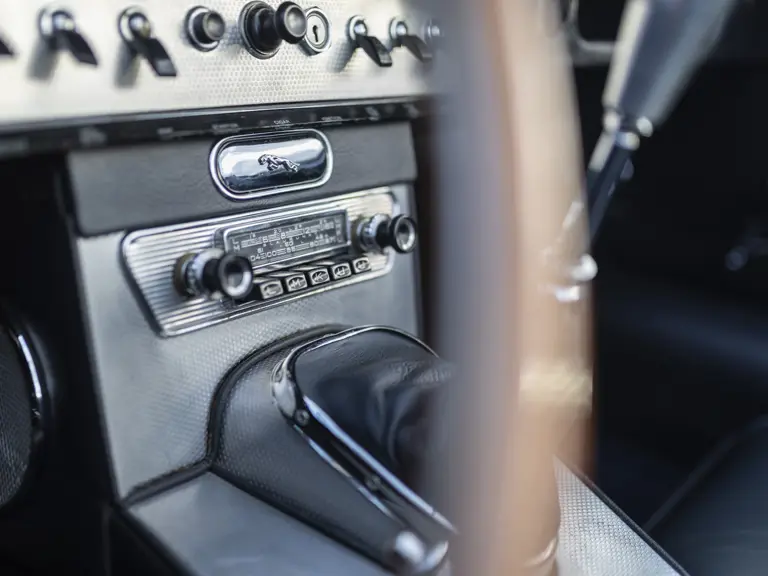
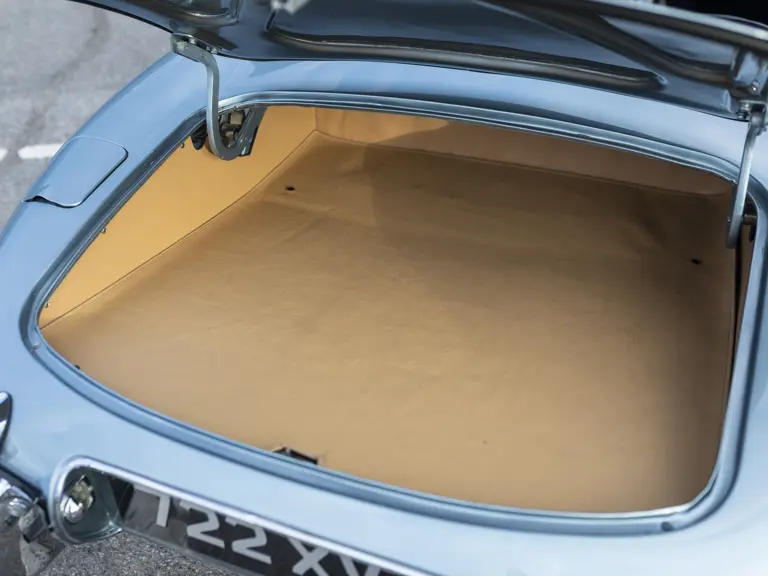
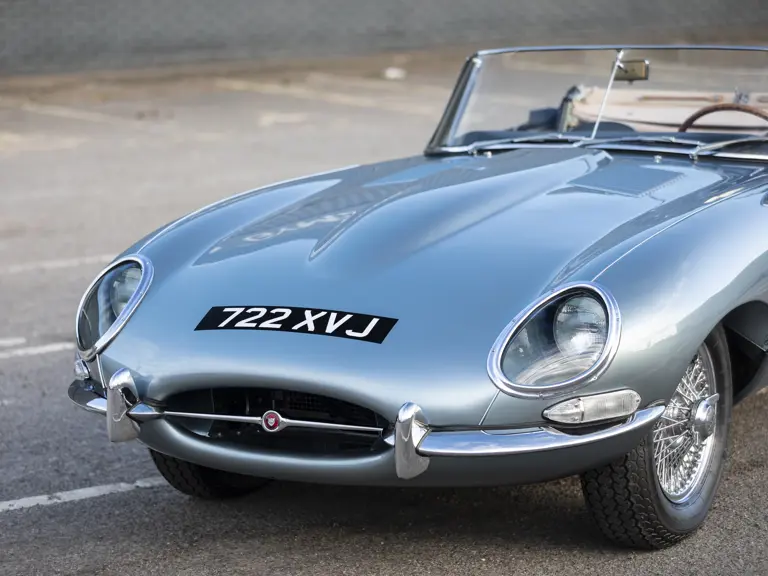
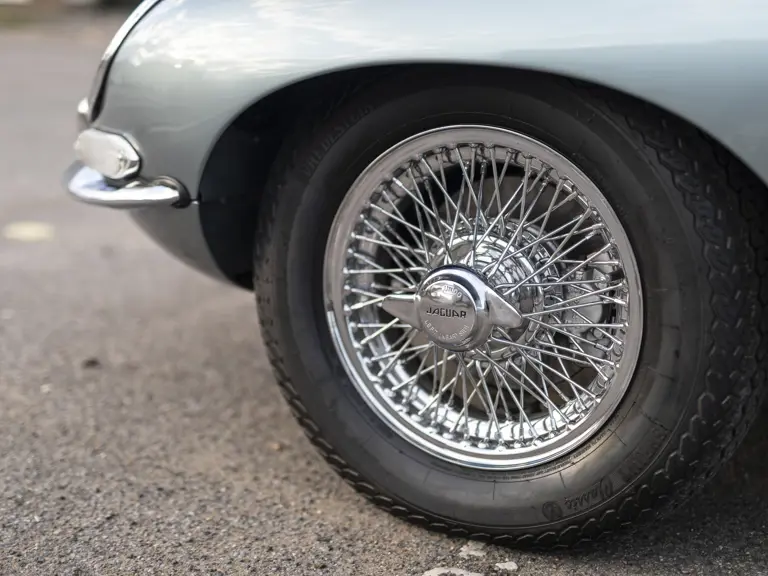

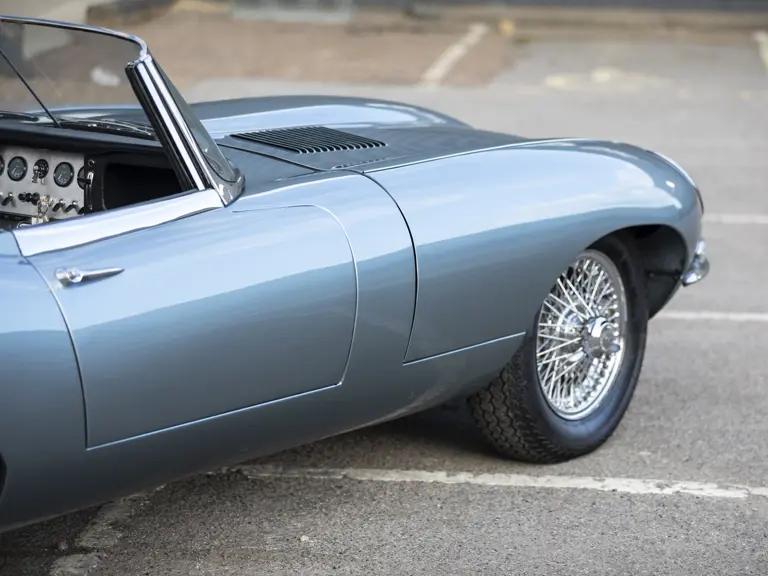
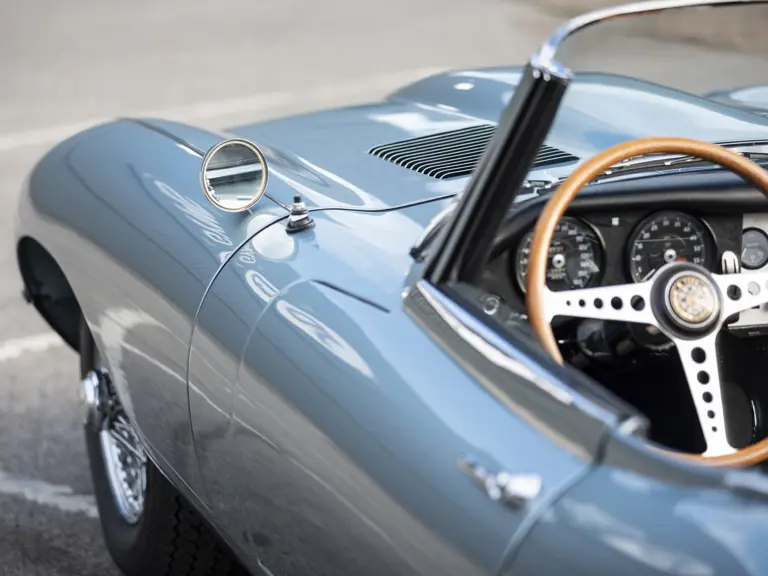
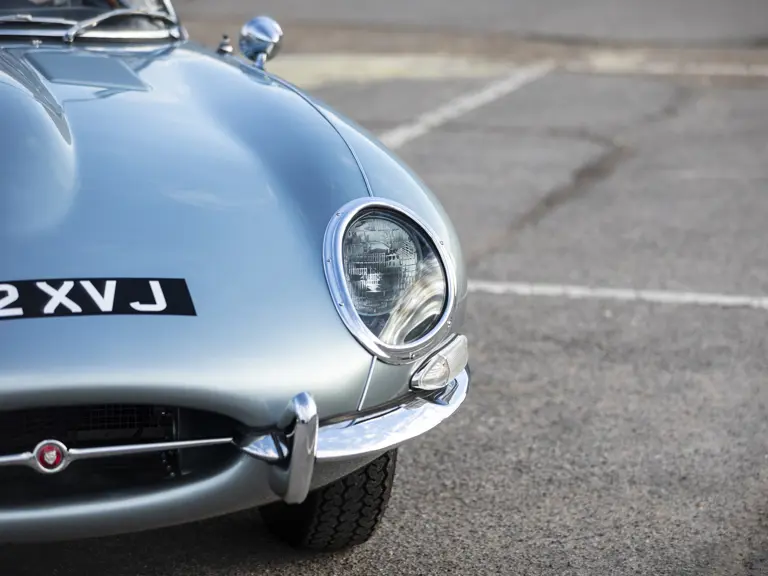
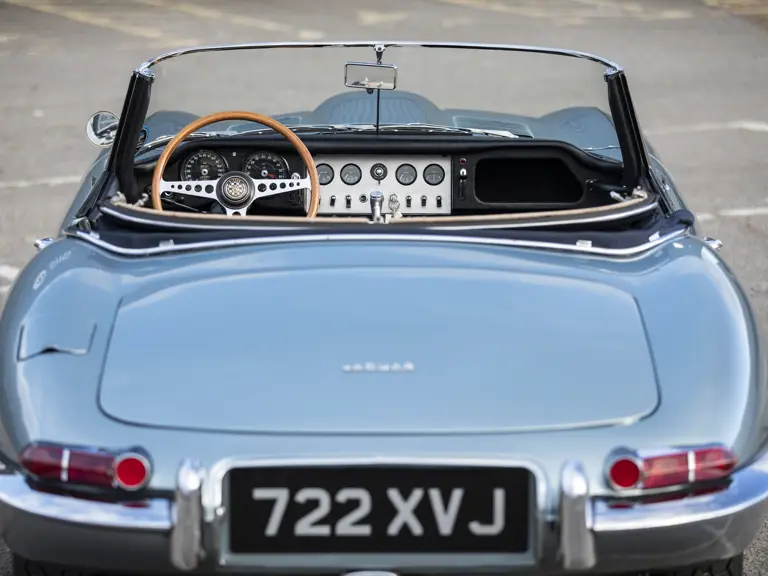


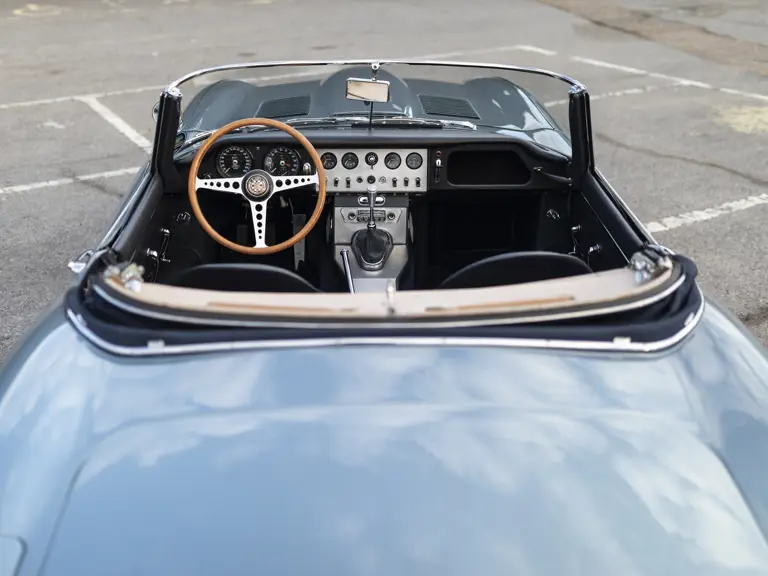


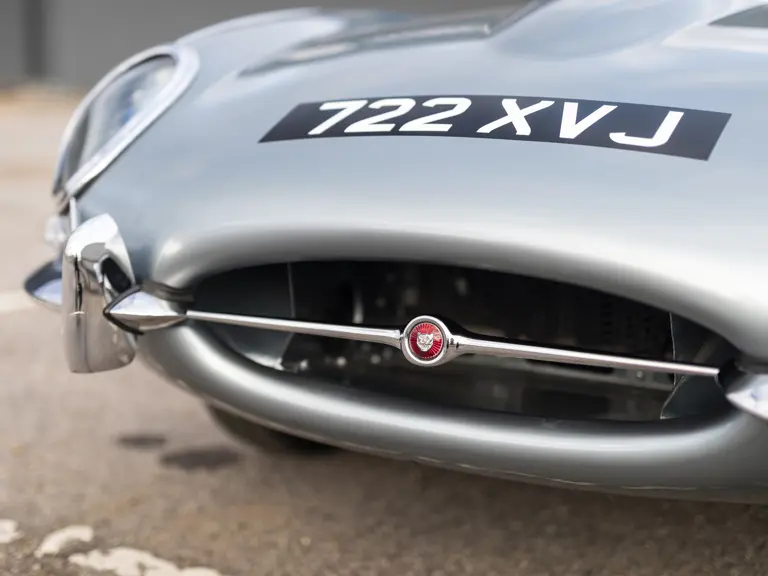
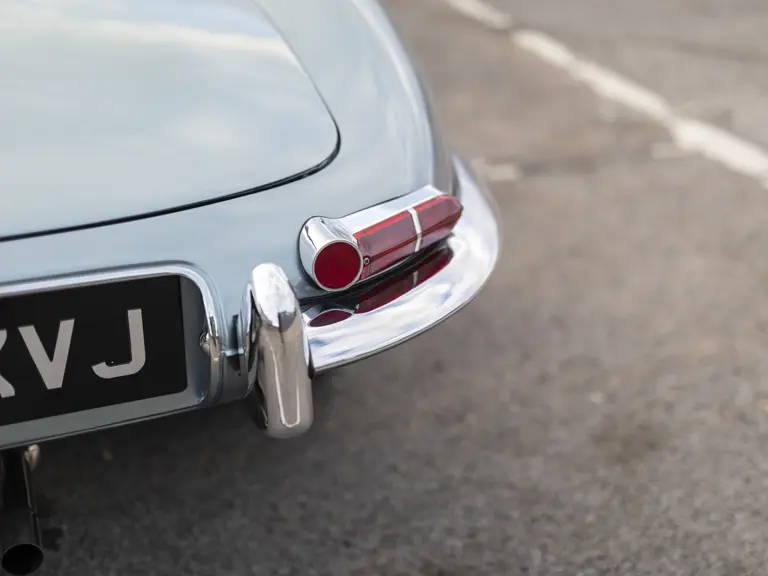
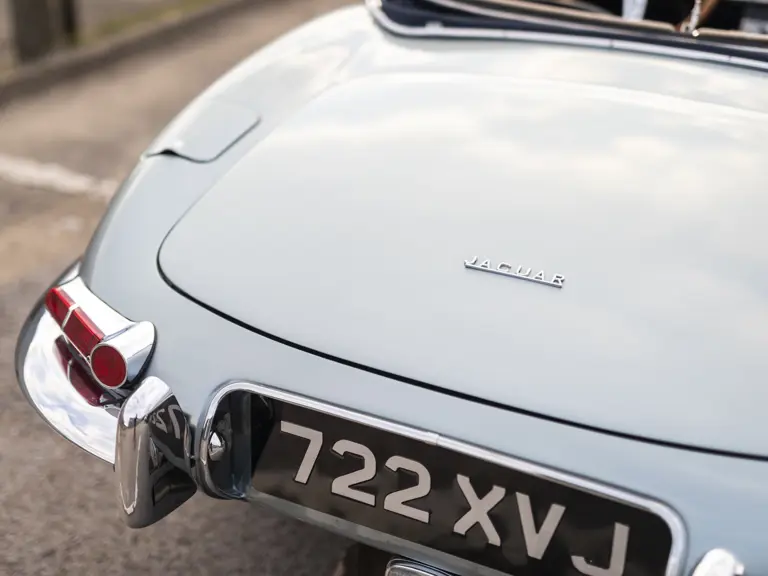
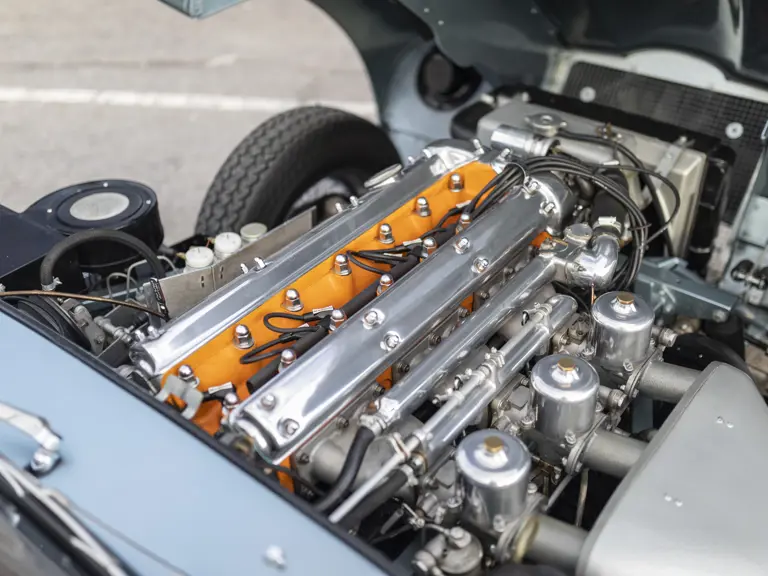
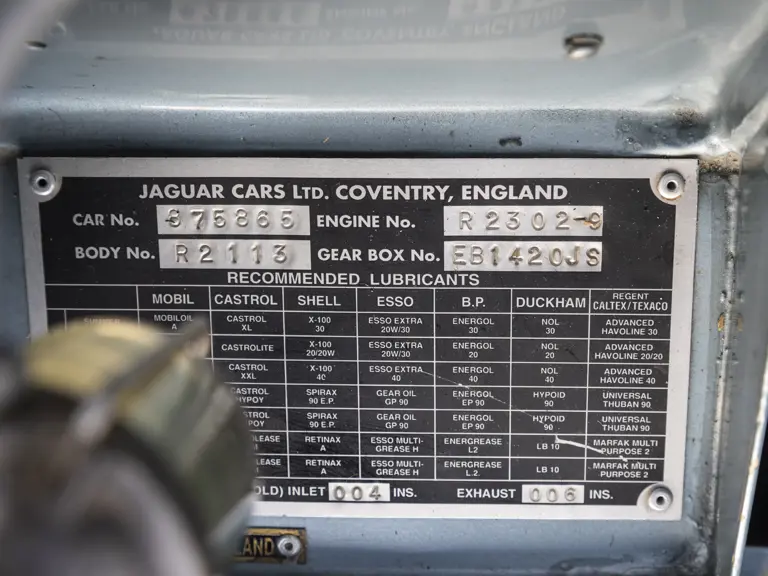


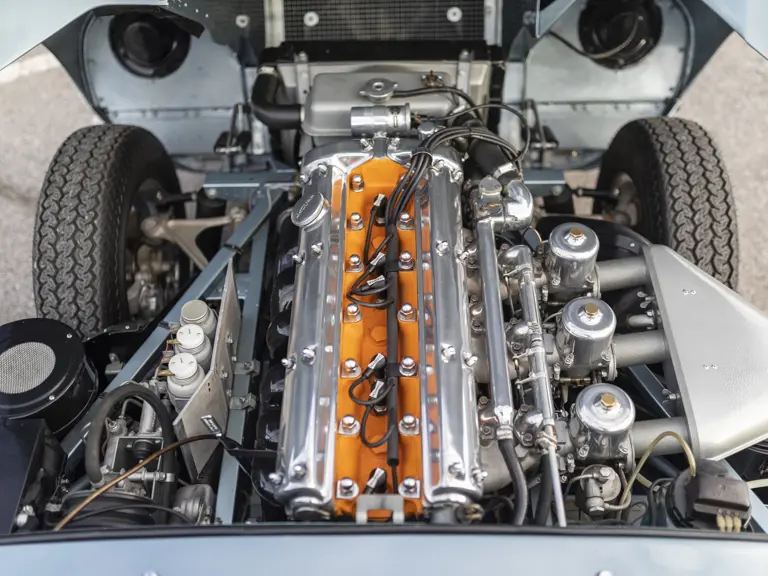
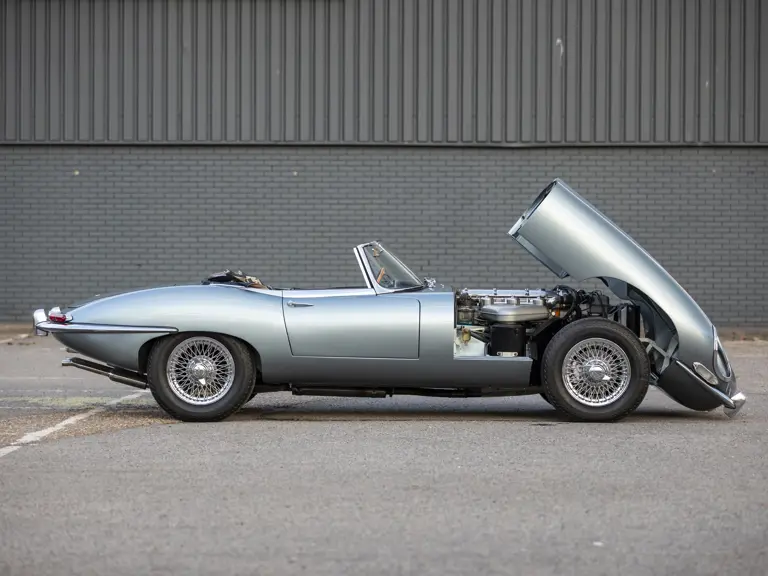
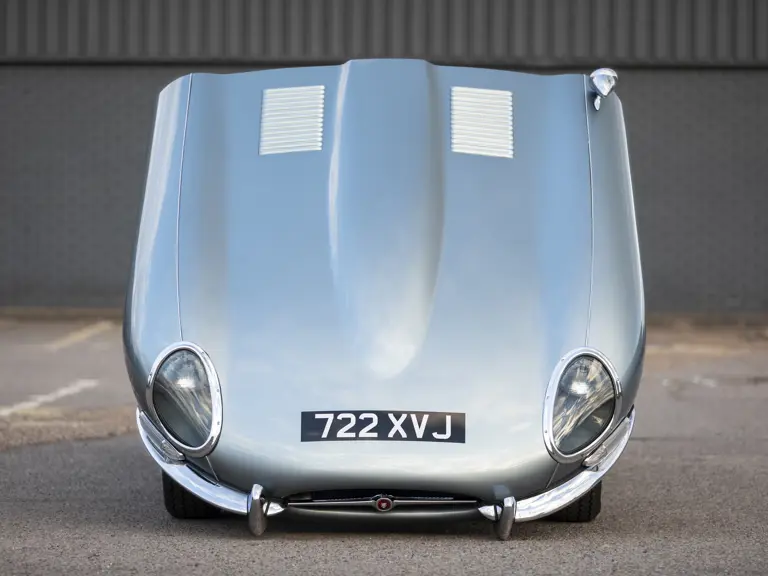


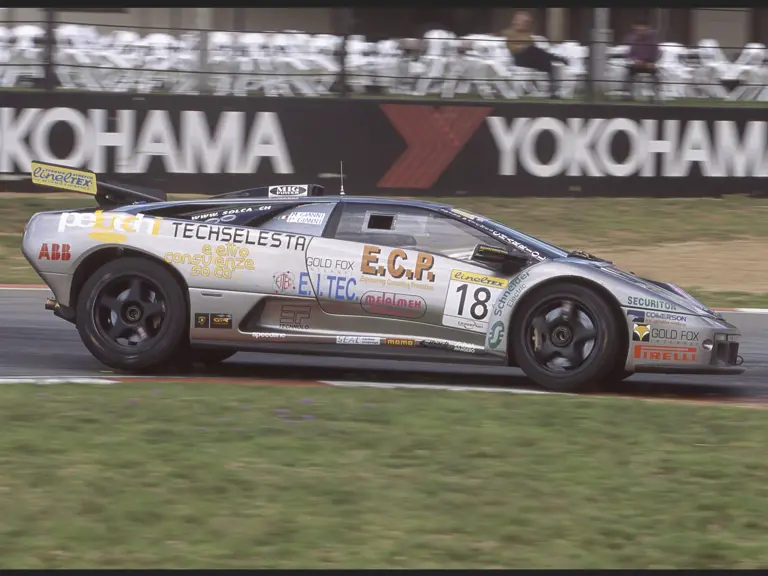
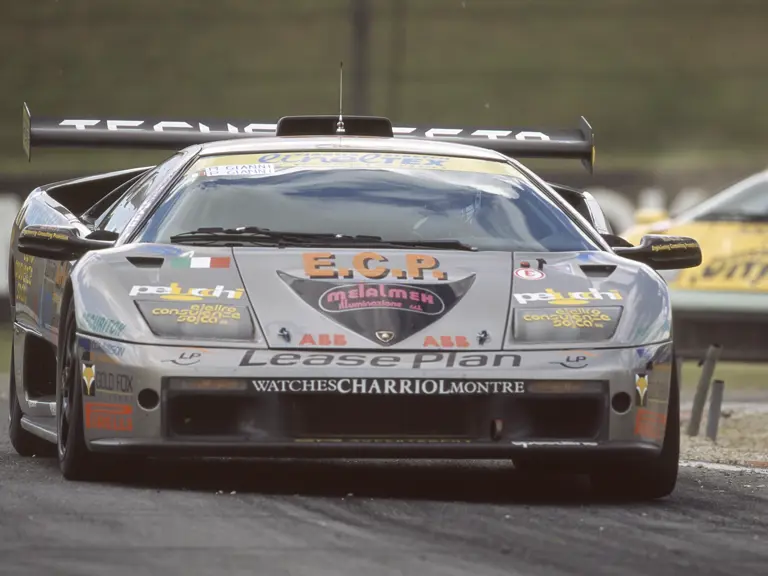
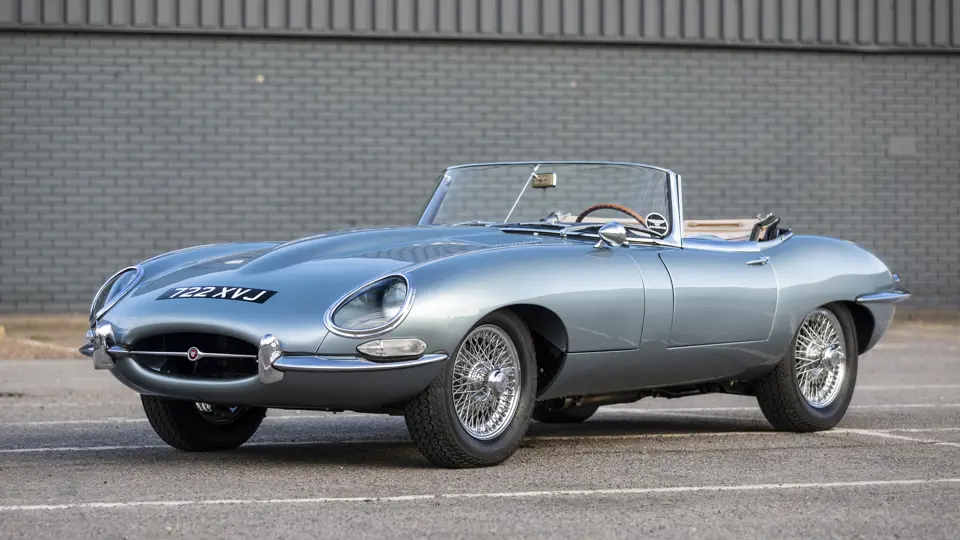
 | London, United Kingdom
| London, United Kingdom
